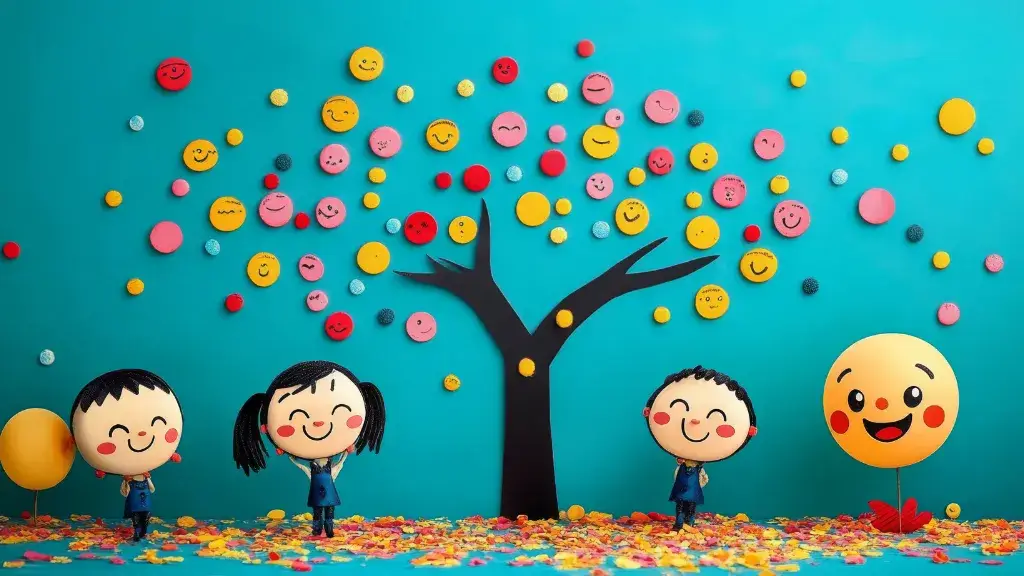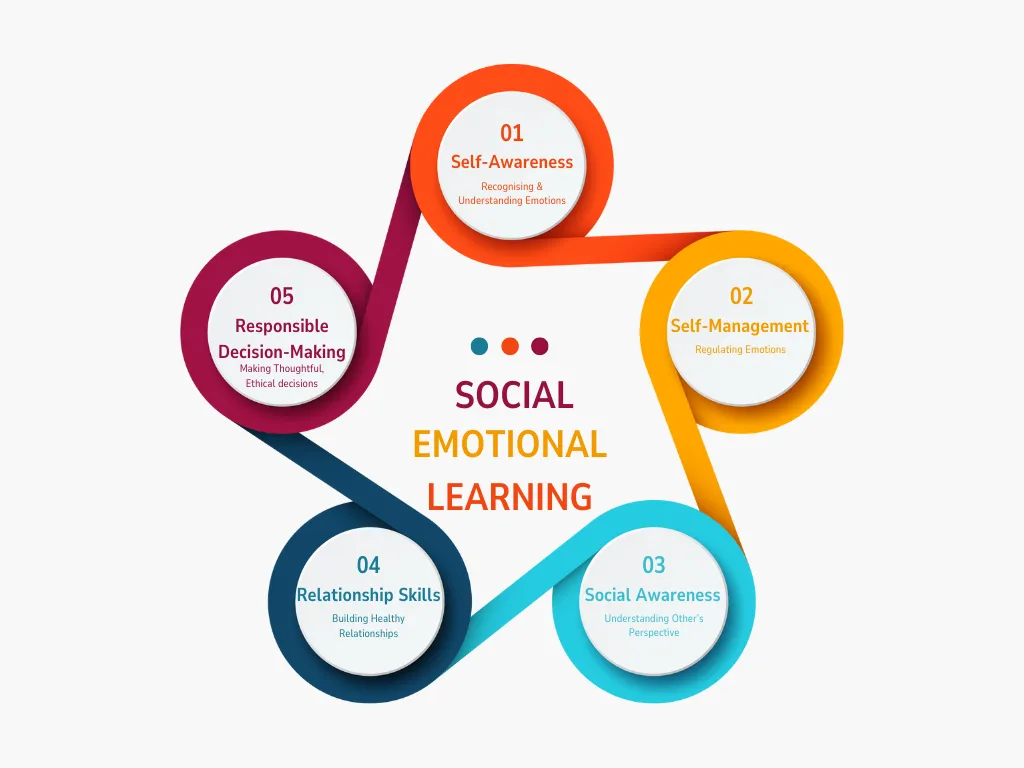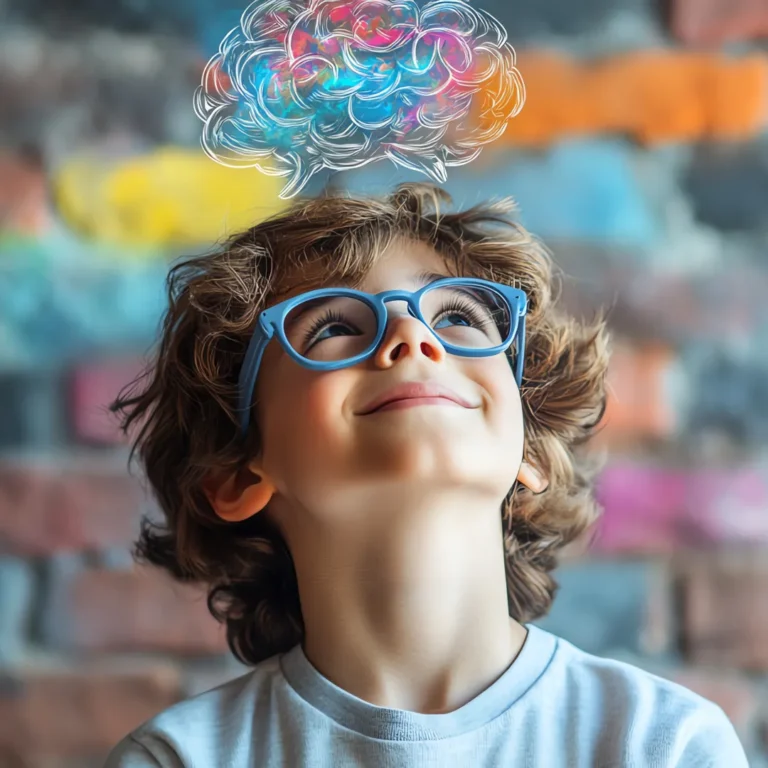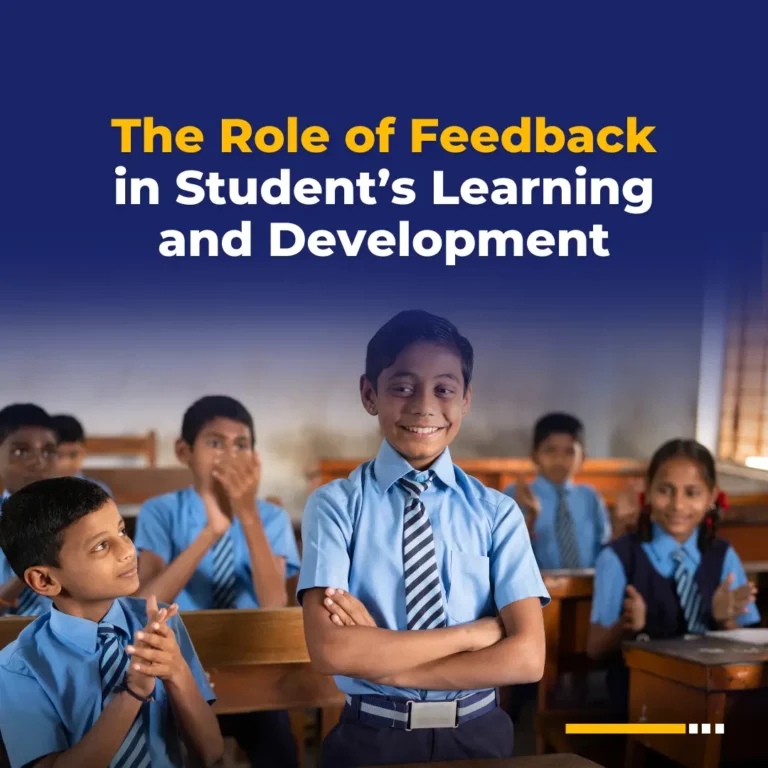How Social-Emotional Learning (SEL) Transforms Classrooms: A Guide for Teachers
- Teachers
- May 16, 2025
- Viva Education

There’s something compelling about the simple act of a smile, a gentle curve that can soften even the loudest cries of a distressed child. When a smiling face approaches a crying infant, that fragile wail often quiets, replaced by a tentative, heartwarming smile. It’s a beautiful glimpse into the invisible bonds that connect us all. This phenomenon is rooted in our biology: mirror neurons in our brains allow us to feel what others feel, to understand their joys and pains as if they were our own. This is why we feel the urge to yawn when we see someone yawn.
But there’s a catch: these same mirror neurons can also pick up and reflect negative emotions, spreading stress, anxiety, or sadness as easily as joy. In classrooms, where emotions run high and social dynamics constantly shift, this can affect how students feel and how well they learn. That’s where Social-Emotional Learning, or SEL, comes in.
In this guide, we’ll explain SEL, why it matters, and how you can incorporate it into your classroom in a practical, impactful, and, yes, even fun way. Ready? Let’s dive in!
What Is Social-Emotional Learning (SEL)?
Social-Emotional Learning (SEL) is developing essential skills such as self-awareness, self-control, and interpersonal abilities that are important for success in school, work, and life. It involves learning to recognise and manage emotions, build healthy relationships, and make responsible decisions, ultimately helping individuals understand and navigate their feelings, connect with others, and handle social situations effectively.
Here’s Why SEL is So Essential:
- Manage Emotions
We all get overwhelmed sometimes, whether by anger, stress, or excitement. SEL helps us recognise what we’re feeling and why. It gives us the tools to slow down, breathe, and respond calmly and thoughtfully rather than act impulsively. - Have Empathy
Understanding how someone else is feeling makes a big difference in friendships, families, and school. SEL helps us practise empathy by teaching us to listen, see things from another person’s point of view, and respond with care and kindness. - Solve Problems Effectively
We all face arguments, tough choices, or tricky situations. SEL helps us step back, think things through, and find a fair way forward. It’s not about having all the answers but about learning how to handle challenges without hurting others or ourselves. - Make Responsible Decisions
We make decisions every day, big and small. SEL teaches us to pause, weigh our options, and choose what feels right, not just what’s easiest. It helps us take responsibility for our choices and feel good about them later. - Maintain Healthy Relationships
Good relationships don’t just happen; they take effort. SEL helps us learn to talk things out, listen properly, set boundaries, and show respect. With these skills, we can build stronger, more caring connections with the people around us.
What Are The Basic Social-Emotional Skills?
Social and Emotional Learning (SEL) gives kids a real-life superpower toolkit. It helps them understand their feelings, handle challenging moments, and connect meaningfully with others. With these skills, kids grow into confident, kind, and resilient people ready to face whatever comes their way.
To help guide this development, the Collaborative for Academic, Social, and Emotional Learning (CASEL) created a widely used framework that highlights five core areas:

1. Self-Awareness
This involves recognising and understanding our emotions, identifying our strengths and weaknesses, and reflecting on past experiences that shape our feelings.
2. Self-Management
Once we know our emotions, the next step is regulating them. This includes managing stress, controlling impulses, setting realistic goals, and developing perseverance.
3. Social Awareness
Understanding how others feel and see things from their perspectives is essential. This means recognising social cues, being empathetic, and respecting people’s experiences from different backgrounds.
4. Relationship Skills
Building healthy relationships relies on effective communication, conflict resolution, and collaboration. It’s also about trusting others, being open to feedback, and working together toward shared goals.
5. Responsible Decision-Making
Making thoughtful, ethical decisions involves considering the consequences of our actions, both for ourselves and for others. It’s about making choices that reflect care for the wider community.
But what does SEL look like in action? Let’s break it down.
What Does SEL Look Like in The Classroom?
Now that we understand the skills, let’s discuss what SEL looks like in a classroom setting. You can bring SEL to life in ways that feel natural and accessible, and it doesn’t require overhauling your entire teaching style. It’s about creating an environment where emotional learning can easily grow.
1. Teacher as Role Model
You’re the first and most influential model for emotional intelligence in the classroom. Your students will follow suit when you demonstrate empathy, self-regulation, and conflict resolution. Lead by example!
2. Safe Spaces
Set up areas where students can go for emotional check-ins or to calm down. This can be a designated corner with calming visuals or sensory tools to help students self-regulate when emotions run high.
3. Classroom Norms
Establish rules that emphasise respect, kindness, and open communication. Simple guidelines like “respect each other’s feelings” and “listen without interrupting” can create an atmosphere of trust and safety.
4. Regular SEL Check-Ins
Incorporate brief moments throughout the day, maybe at the start of class or just before lunch, where students can check in on how they’re feeling. These quick moments help students recognise their emotions and create space for self-reflection.
A big part of SEL is making it part of everyday learning. These moments help students practise real-life emotional skills, whether it’s a class discussion or a group project. That’s where programmes like VOLT Learning come in, offering engaging content that supports how students feel and learn.
Integrating SEL Across The Curriculum
You don’t have to isolate SEL to a specific part of the day. It can be integrated into every subject and activity; honestly, it should be! Here’s how you can weave SEL into your entire curriculum:
- Literacy: Incorporate SEL by exploring emotions, choices, and relationships within texts, whether they’re stories, articles, or historical accounts. Discussions around how people think, feel, and act can happen before, during, and after reading, helping students connect personally with the material and deepen their understanding.
- Math: Incorporate teamwork in problem-solving tasks. Discuss how cooperation and patience are key when working with others.
- Science & Social Studies: Talk about ethical decisions, emotional reactions, and social dilemmas in real-world scenarios.
- Arts & PE: Creative expression and physical activity offer rich opportunities for students to practise empathy, communication, and teamwork. Whether it’s collaborating on a performance or working together during a game, these subjects naturally build social and emotional growth.
Practical Strategies for Teaching SEL
Whether you’re a teacher, a parent, or someone who cares about kids, you’ve probably asked yourself: What works when helping kids grow emotionally? The good news is, you don’t need fancy programs or hours of extra time. A few thoughtful social-emotional learning activities woven into the day can make a huge difference. Here are five strategies that can work wonders in a classroom:
1. Gratitude, “I’m Sorry,” or “Now I Get It” Circles
There’s something powerful about sitting in a circle at the end of a busy day and just… sharing. Try this: invite your students to say one of three things:
- Something they’re grateful for
- Something they’re sorry about
- An “aha” moment they had that day.
Nothing fancy, just honest, human words.
This little practice opens doors. Kids learn to name their feelings, take ownership of their actions, and notice the good stuff. And you’d be amazed at how much they want to share when they feel safe. Keep it simple, short, and optional. Some days, everyone talks. Some days it’s just one brave voice. And both are okay.
2. Feelings-Based Think-Pair-Share
We all use Turn & Talk or Think-Pair-Share; it’s great for engagement. But if you add just a sprinkle of SEL to it, you unlock a whole new level of connection. Ask questions like:
- “How do you think that character felt, and why?”
- “Have you ever felt the same way?”
When students speak not just from their brains but also from their hearts, conversations go deeper, and the classroom gets kinder. Start with your own story. Model being open; it helps them feel safe doing the same.
3. Quick Mindfulness Moments
You know those times when the class energy is just… too much? Before a test, after recess, or during a rainy-day funk? Try this: two minutes of quiet breathing. Ask them to close their eyes or rest their heads, take a few slow breaths, and just notice what’s going on inside.
It’s like hitting the reset button—for them, and let’s be honest, for us, too. You don’t have to be a yoga guru. A calm voice, a few deep breaths, and a moment of stillness can work wonders.
4. Rip It and Toss It
Sometimes, kids come into class carrying big emotions. Sometimes, so do we. This is a simple one: Give everyone a tiny piece of paper. Have them write down something that’s bothering them—no names, no sharing. Then, rip it. Toss it.
That’s it. But you know what? That act of release is powerful. It tells kids that their feelings matter, and they’re allowed to let things go. Frame it as a reset, not a fix, and always remind them they’re not alone.
5. Story Circles for Real Talk
Every now and then, set aside a little time for real conversation. Divide the class into small groups and give them a question to talk about, not academic, just human. Like:
- “What’s something about you that others don’t always see?”
- “What’s one thing you’re proud of?”
Let them speak, listen, and connect. You’ll see walls come down, friendships form, and empathy grow right before your eyes.
Set ground rules for kindness and privacy. And be part of the circle because your voice matters, too.
Measuring and Reflecting on SEL Impact
You’re already investing time and effort into SEL, so measuring the impact and ensuring it’s working is essential. Here are some ways to track progress:
1. Student Progress
Tools such as simple emotional check-ins can monitor students’ social and emotional development. They offer a quick snapshot of how well students understand and manage their emotions and how they’re navigating relationships with others.
2. Reflection Practices
Encourage students to reflect on their SEL progress. This can be through self-assessments or regular feedback conversations.
Click here to download reflection questions
3. Sustaining Impact
Embed SEL in your classroom every day. It’s not a one-time lesson, but a continuous process. Incorporating SEL into daily routines and consistent check-ins ensures long-term success.
Let’s Make SEL a Priority
You have the power to shape the emotional landscape of your classroom, and by doing so, you’re helping your students become better learners and people. SEL is the heart of effective teaching. When students feel emotionally supported and understand their feelings, they engage, learn, and thrive.
So, let’s commit to bringing SEL into our classrooms for the students, us, and the future we’re helping to shape.
Frequently Asked Questions:
1. Can SEL help students with learning disabilities or behavioural challenges?
Yes, SEL can especially benefit students with learning disabilities or behavioural challenges. It provides them with tools to manage frustration, improve social interactions, and build self-regulation, ultimately enhancing their learning experience and social skills.
2. How can SEL be adapted for different age groups?
SEL can focus on basic emotional recognition and self-regulation for younger students using games and simple discussions. For older students, it can involve deeper discussions around ethics, empathy, and handling complex social situations, often through group work and reflective activities.
3. Is SEL only the responsibility of teachers?
While teachers play a vital role in delivering SEL, it is a whole-school responsibility. Parents, school counsellors, and even peers contribute to creating a supportive environment where SEL can thrive in and outside the classroom.
4. How can SEL support a positive school culture?
When SEL is integrated school-wide, it builds a culture of empathy, respect, and understanding. Students and staff are more equipped to manage conflicts, collaborate, and maintain positive relationships, making the school environment more inclusive and supportive.
5. Can SEL be integrated with technology?
SEL can be integrated with technology through apps, online resources, and virtual check-ins. Emotion-tracking apps or digital storytelling platforms can help students express their feelings and think critically about their emotional experiences.
Share on:



